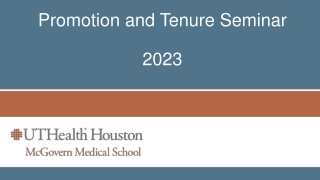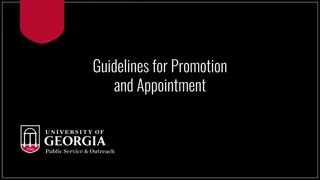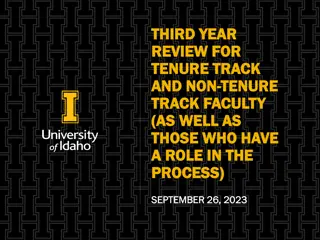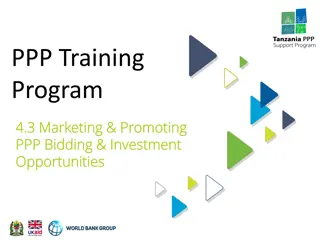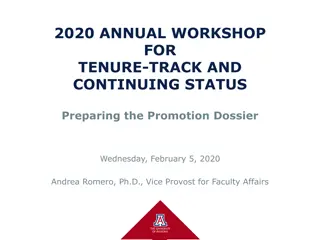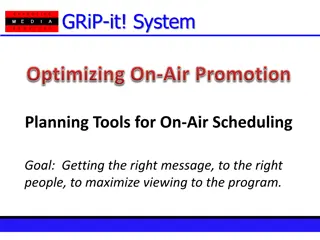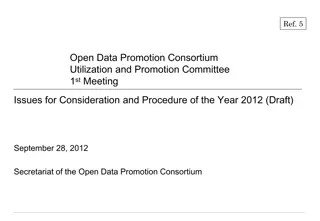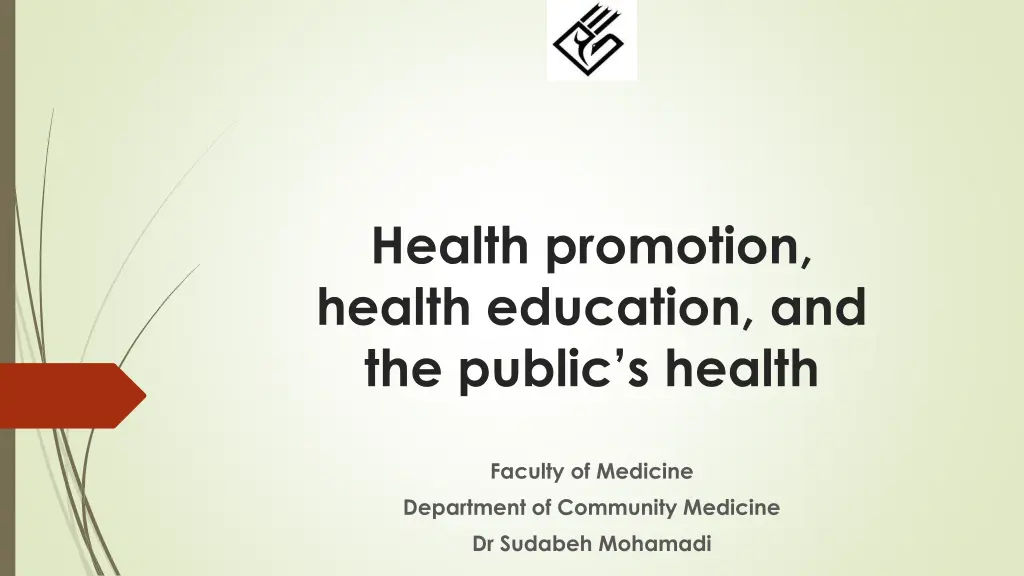
Understanding Health Promotion and Public Health Initiatives
Explore the concepts of health promotion, health education, and public health through the lens of WHO guidelines and the Ottawa Charter. Learn how these initiatives aim to improve individual and community well-being by addressing social, environmental, and economic factors affecting health.
Download Presentation

Please find below an Image/Link to download the presentation.
The content on the website is provided AS IS for your information and personal use only. It may not be sold, licensed, or shared on other websites without obtaining consent from the author. If you encounter any issues during the download, it is possible that the publisher has removed the file from their server.
You are allowed to download the files provided on this website for personal or commercial use, subject to the condition that they are used lawfully. All files are the property of their respective owners.
The content on the website is provided AS IS for your information and personal use only. It may not be sold, licensed, or shared on other websites without obtaining consent from the author.
E N D
Presentation Transcript
Health promotion, health education, and the public s health Faculty of Medicine Department of Community Medicine Dr Sudabeh Mohamadi
Health promotion, health equity, and action on the determinants of health 3 Particular attention will be paid to the recent work following up the World Health Organization (WHO) Commission on the Social Determinants of Health, and the renewal of the Ottawa Charter action area of healthy public policy in the Health in All Policies global movement, spearheaded by the WHO.
Health promotion 4 Ottawa Charter for Health Promotion (WHO 1986) defines health promotion as: the process of enabling people to increase control over, and to improve their health .
The expanded definition in the Health Promotion Glossary: 5 Health promotion represents a comprehensive social and political process, it not only embraces actions directed at strengthening the skills and capabilities of individuals, but also action directed towards changing social, environmental and economic conditions so as to alleviate their impact on public and individual health.
6 Health promotion is the process of enabling people to increase control over the determinants of health and thereby improve their health. (WHO 1998)
7 The Glossary also emphasizes that participation is essential to sustain health promotion action , and identifies the three strategies for health promotion: Advocacy for health to create the essential conditions for health Enabling all people to achieve their full health potential Mediating between the different interests in society in the pursuit of health Ottawa Charter
8 These strategies are supported by five priority action areas as outlined in the Ottawa Charter: 1. Build healthy public policy 2. Create supportive environments for health 3. Strengthen community action for health 4. Develop personal skills 5. Re-orient health services (WHO 1986)
Health promotion as a process 9 The essence of the health promotion process is a focused shift of power from professionals to the community and to individuals within their communities who historically have had less power.
10 It is crucial that the process we focus on is the one that involves negotiating values, principles, ethics, and power, not the less complicated one of transferring a packet of new skills and technical tools to a community that is presumed to lack capacity.
11 In order to achieve this shift in power, health promoters need to begin by examining their assumptions that inform their actions. own values and
Beliefs and assumptions underlying health promotion 12 1. All people have strengths and are capable of determining their own needs, finding their own answers, and solving their own problems. 2. Diversity is positively valued.
13 4. People without power have as much capacity as the powerful to assess their own needs (people are their own experts). 5. Relationships between people and groups need to be organized to provide an equal balance of power (this includes professional/client relationships).
14 6. The power of defining health problems and needs belongs to those experiencing the problem. 7. The people disadvantaged by the way that society is currently structured must play the primary role in developing the strategies by which they gain increased control over valued resources.
15 8. Empowerment is not something that occurs purely from within (only I can empower myself), nor is it something that can be done to others (we need to empower the group). Rather, intentional efforts to create more equitable relationships where there is greater equality in resources, status, and authority. empowerment describes our
16 9. Shared power relations do not deny health professionals their specialized expertise and skills. Rather, professional expertise and skills are used in new ways that result in greater power equity in interpersonal and social relations.
Enabling and empowerment 17 At the time of the Ottawa Charter, the word enabling was favoured, although later this tended to be replaced with the more direct and comprehensive concept of empowerment . A prerequisite for the new approach was that individuals and communities were to directly participate in the planning and implementation of activities. health promotion
18 Enabling also referred to the more general process of changing the social, economic, and environmental conditions that made it difficult for people to become empowered.
19 If there is a direct link between human dignity, autonomy, and equity, then all aspects of health integrate the fundamental perspective of participation. promotion must
20 On the positive side, an empowering health promotion process leaves the ownership and control of a health promotion activity or programme in the hands of the community itself.
21 The most effective strategy for change: Allowing people to participate in a genuine way in determining not only what they want but how they want to get it. It is also the only strategy for sustaining progress in improving health and shifting control back to the community and away from a negative bureaucratic and professional power. dependence on
What is the health in health promotion? 22 The WHO had introduced the positive definition of health as a state of complete physical, mental, and social well-being and not merely the absence of disease or infirmity .
23 The healthcare system plays only a small part in determining health. The lifestyle or behavioural approach to health : Health was determined by the interplay between healthcare organization, and lifestyle. human biology, environment,
24 The socioecological approach defined health as a resource for everyday life, not the objective of living . Health is a positive concept emphasizing social and personal resources as well as physical capacities .
25 In order to reach this state of physical, mental, and social well-being, people must be able to identify and realize their aspirations, to satisfy their needs and to change, or cope, with their environment.
26 If we hold a view that health is the absence of disease, we are likely to talk about disease processes and risk factors and to manage professionally by prescribing a treatment. the problem
27 If we hold a socioecological view of health, we are more likely to focus on the conditions in which the person is living, the factors that are influencing their ability to meet their needs, and to use enabling strategies to assist the person to have more control over their health.
The Ottawa Charter strategies 28 to advocate to enable to mediate
29 Advocacy including the use of the mass media and multi-media, direct political lobbying, and community mobilization example, coalitions of interest around defined issues. can take many forms through, for
30 Often, the same organization or individual will be less effective as a political lobbyist to the extent they are perceived to be directly associated mobilization efforts that the powerful are either indifferent to, or actively disfavour. with community
31 Mediation: A process through which the different interests economic) of individuals and communities and different sectors (public and private) are reconciled in ways that promote and protect health (WHO 1986). (personal, social,
The Ottawa Charter action areas 32
Building healthy public policy 33 There are three elements of healthy public policy emphasized in the Ottawa Charter: 1. If the determinants of health lay mainly outside healthcare itself, then policy action must come from policy sectors other than health. The health sector would still play an important, but not exclusive, role in public policy action to support health.
34 2. Healthy public policy requires the coordinated use of all available, including measures, taxation, and organizational change (WHO 1986). policy levers legislation, fiscal 3. Healthy public policy requires the identification and removal of obstacles to the adoption of such policies in non-health sectors.
35 The global economic crisis brought on by the 2008 financial crash has led to some very regressive shifts in fiscal policy and thus social supports for a healthy public policy; meanwhile, global institutions, such as the WHO, have been increasingly supportive of the conceptual logic of healthy public policy.
Creating supportive environments 36 This area forms the basis for what is called the socioecological approach to health. This entails the complex relationships between rapidly changing technologies, working conditions, resource use, climate change, urbanization, and health.
37 In the real world, we are not able to coordinate all the best knowledge sources available. Instead, we are left with tools like health impact assessment (HIA).
38 Health combination of procedures, methods, and tools by which a policy, program, or project may be judged as to its potential effects on the health of a population, and the distribution of those effects within the population." impact assessment (HIA): "a
Strengthening community action 39 Indeed, what we see in this area is the place where the true spirit of health promotion is anchored in community development as a process. Strengthening community action quite simply is community development.
40 Community development according to International Association for Community Development: Way of strengthening civil society by prioritising the actions of communities, and their perspectives in the development of social, economic and environmental policy.
41 The community organization or development: five principles as foundational to Empowerment Community competence Participation Issue selection Creating critical consciousness
Developing personal skills 42 The Ottawa Charter tells us that health promotion supports personal and social development through information, education for health, and enhancing life skills . providing
43 However, since the Ottawa Charter, health promoters, with some exceptions, have tended to either ignore or aim strong criticism at the developing personal skills area. This has come about for three reasons:
44 First, as part of the critique of health education, it was argued that individually focused education approaches were generally ineffective in bringing about health promoting behavioural change; instead, a switch to an emphasis on the social factors that influence health was necessary to overcome the limitations of traditional counselling interventions circumscribed discipline of psychology. and other the by
45 Second, on developing personal skills was associated with the element. victim-blaming
46 Finally, although developing personal skills is a central mechanism for empowering individuals to take control over their own health, many worried that, in this narrow approach, the collective strengthening of communities was adversely effected.
Reorienting health services 47 The most complex service for health promotion being the acute care hospital setting. It is possible to practice from a health promotion perspective even within this particularly medically environment, for nurses at least. dominated
48 The Alma Ata Declaration (WHO 1978) was the precursor for the Ottawa Charter. These two documents share the same values, principles, and basic tenets.
49 The Alma Ata Declaration addresses health systems more particularly while the Ottawa Charter has a broader mandate. But it is their relationship that provides the key to reorienting health services. That is, primary healthcare is a place for health promotion to focus its energy in terms of reorienting health services.
50 Primary healthcare refers to the philosophy and principles articulated in the Alma Ata Declaration (WHO 1978): universality: universal access to health services accessibility: the removal of geographic, social, economic, or cultural barriers to access

